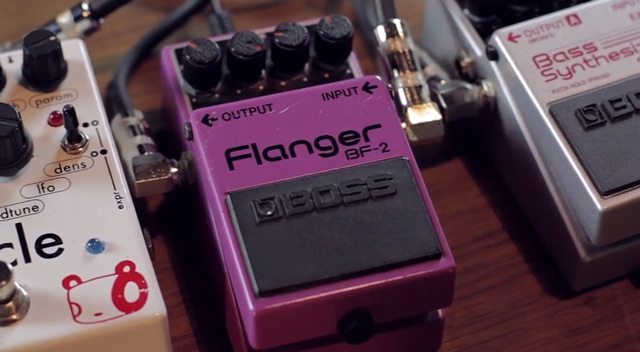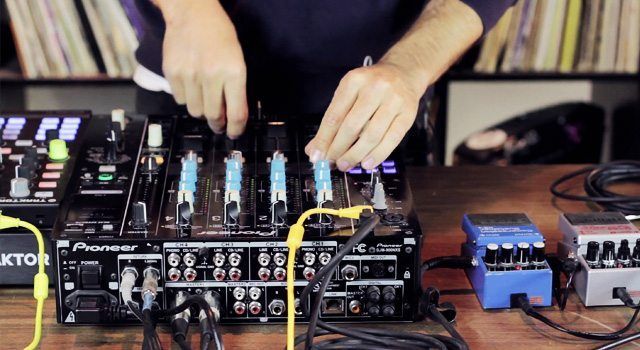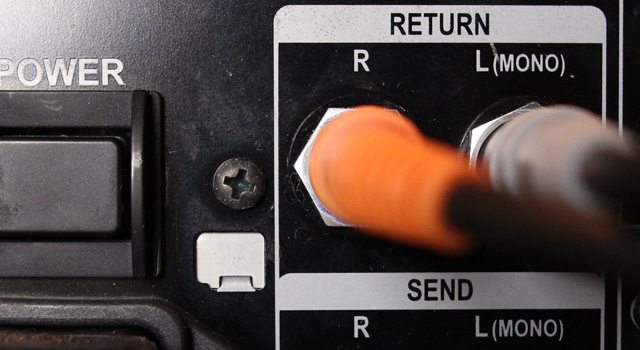Over the past few months, we’ve amassed a sizable collection of guitar effects pedals and delved deep into their usability for DJs. Today Ean Golden shares with you some tips and tricks on how to integrate these awesome analog/digital effects into your digital DJ setup while also offering recommendations on which models sound the best.
WHERE TO START
SOME DETAILS TO KEEP IN MIND

All of these pedals are designed with the foot in mind, not your hand, but there are some ways in which they can be used in table-top format as well.
- Stay away from the silver peg-style switch; these are nearly impossible to use.
- Pedals with spring-loaded platforms (like the Boss series) can be modified with lighter springs so they are easier to press
- Pedals like the Mooer series will accommodate arcade buttons with some modifications to the circuit board.
To make things easier, DJ TechTools is stepping in to help, and starting Monday, we will be carrying the best models in our store including:
- Select Mooer pedals with arcade-button mods
- Select Boss pedals modified with light springs for hand use and dampening to reduce the “clack” sound normally present with a press.
It’s easiest if you’re using a mixer with a send and return, which will allow you to route any external effects to any individual channel on the mixer.
Most mixers’ send and return will have a mono output, so try ordering your effects with mono devices first, then adding stereo effects after those. Many clubs run their sound systems in mono due to less-than-ideal listening conditions. Often stereo effects can be lost in the mix, so it might be wise to run everything in mono anyway if live shows are in the plan.
Of course, you can set up your effects chain however you like, but, in this instance, Ean starts with a Boss Compressor/Sustainer to bring his drum sounds together, followed by a Bass Synthesizer, Flanger, a Red Panda Particle Granular Delay, a Digital Pitch Shifter/Delay, and so on, and ends with a stereo-signal Digital Reverb.

Naturally, mixing analog guitar effects with your digital DJ setup is all about creativity and improvisation, so experiment and have fun with it. Try re-ordering your devices to see what happens, and find the fit that works best for you. With hundreds of options out there it can be hard to decide which will work, especially since testing them out is not a viable option. Here is a short list of the more interesting effects that Ean feels work well for DJing:
- Boss Bass Synthesizer – Turns any rhythm into a TB-303 with great squelching flavor, however very atonal and difficult to keep in key.
- Boss Digital Reverb RV5 – Amazing stereo digital reverb in a small footprint. Gets washed out in stereo in a club, and may be best run in mono.
- Boss Digital Delay DD3 – This is the most popular delay for syncopated patterns that are out of time.
- Boss Digital Delay DD7 – Like the DD3, but with tap-tempo for synced delays. It also has a unique wet delay fadeout, which is nice.
- Boss Tera Echo – Very unique-sounding delay.
- Boss Pitch Shifter/Digital Delay – Basically the DD3 with some extra pitch-shifting effects. Packs a lot of value into a small footprint.
- Boss Equalizer – Surprisingly fun multi-band EQ, which makes it easy to punch in big EQ changes for musical effects.
- Boss Compression/Sustainer – Fantastic compressor, especially for drums. This is great for gluing together rhythmic material in the mix.
- Red Panda Particle – Freeze effects, delays, and pitch-shifting with a foot-pedal input for expression make this a very unique offering.
- Mooer Analog Delay – Instant crazy feedback and genuine analog delays create deep dub sounds.
- Mooer ShimVerb – Authentic analog reverb that sounds very warm.
- Mooer Pitch Shifter – Great for revoicing synth lines.
We recognize that there are hundreds of guitar FX pedals in the world, and many companies (small and large) that provide excellent products. In the coming months, we intend to explore other brands and models, but Ean chose to focus primarily on Boss for this early research since they are prevalent, affordable, and provide a wide range of high-quality options.
Like any instrument, certain effects lend themselves to specific purposes. For example, delays/reverbs and compression compliment drums well, while distortion does not. Things like bass limiters, octavers, and overtones are very good if you want to bring basslines and synths alive. Just be sure to have good idea of what material you intend to modify, since that will dictate the appropriate pedal types. – Ean Golden







